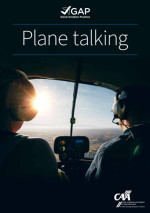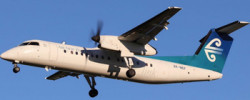When we talk about communication in the context of ‘non-technical skills’ we’re talking about broad concepts of effective communication – the skills that help us function, not only in the workplace, but also in our daily lives.

Photo: iStock/kasto80
These are concepts like how to listen, how to hear, giving and receiving feedback, not interrupting, asking ‘open’ questions, and how to have a difficult conversation.
Communication skills affect how we function in a flight crew, in a team of engineers, in an ATC radar centre or tower, in the office, or with our passengers. And these are the communication skills needed in a safety critical environment like aviation, whether we’re the leader of a team or a member of a team – even if that’s a team of two.
Communication is vital to maintaining a high level of situational awareness, so it’s important we take the time to learn about, and understand, what makes a good communicator. In aviation, these skills become critical in emergency situations involving more than one person and it can mean the difference between life and death.
 When we talk about communication in aviation, it’s natural to think we’re talking about how to talk on the radio – to other pilots, or to ATC. There are a lot of things to consider when it comes to being an effective communicator over the radio.
When we talk about communication in aviation, it’s natural to think we’re talking about how to talk on the radio – to other pilots, or to ATC. There are a lot of things to consider when it comes to being an effective communicator over the radio.
Rather than reproduce all that information here, we already have a great GAP booklet on how to communicate effectively in this way:
There are four basic steps to communication:
Now that all sounds fairly straightforward doesn’t it? If only it were that simple. It seems timely here to insert a memorable quote from Irish writer, George Bernard Shaw, who said:
“The single biggest problem in communication is the illusion that it has taken place.”
Well, quite a lot as it turns out. Here’s a not-very-short list.
Below is a link to an interesting TED Talk by author, John O’Leary, on the Challenger space shuttle disaster where he describes how ‘failures of communication’ led to one of the biggest space travel tragedies in history.
LISTEN – as in, actually listen. Don’t just think about what you’re going to say next.
BE HONEST – Say how you feel but do it constructively and tactfully.
Be mindful of your BODY LANGUAGE.
Don’t ASSUME – ask questions if you need to.
Be RESPECTFUL – discuss, don’t debate.
Mastering the art of communication along with all the other elements that make up NTS means we’ll be effective aviation safety leaders and team members.
Serious incidents and accidents arising from communication issues have occurred in New Zealand. The following Transport Accident Investigation Commission (TAIC) investigation report into a loss of separation between two Dash-8 aircraft at Wellington highlights the contribution of reduced situational awareness, and physiological aspects of human factors – such as human limitations when seeing and identifying other traffic. In addition to those factors, communication issues between ATC and flight crew contributed to this loss of separation.

Photo: Flight Aware
TAIC aviation inquiry AO-2019-002(external link)
Bombardiers DHC-8-311
ZK-NEH and ZK-NEF
Loss of separation
Near Wellington, New Zealand
12 March 2019